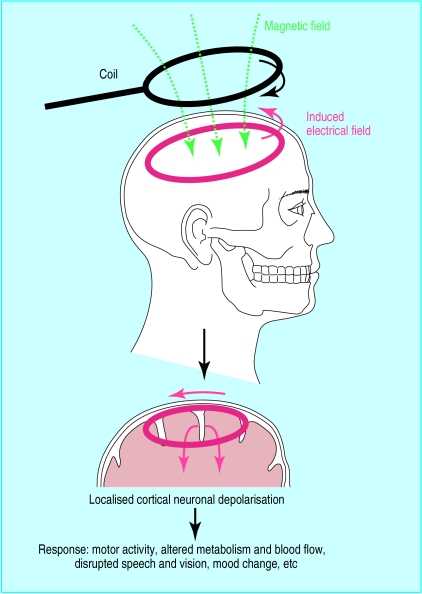Figure 1.
Transcranial magnetic stimulation is based on the principle that an electric current passing through a flat handheld insulated coil placed tangentially on the scalp generates a magnetic field. This can be targeted to a selected scalp area (∼cm2) and induces a secondary electrical field in the underlying cortex, causing neuronal depolarisation. Patients can be given a single brief magnetic pulse or a series of pulses (repetitive transcranial magnetic stimulation). Excitability of neurones is enhanced by fast repetitive transcranial magnetic stimulation (usually 5-20 Hz) but inhibited by slow repetitive transcranial magnetic stimulation (<1 Hz). The effect depends on the site stimulated

